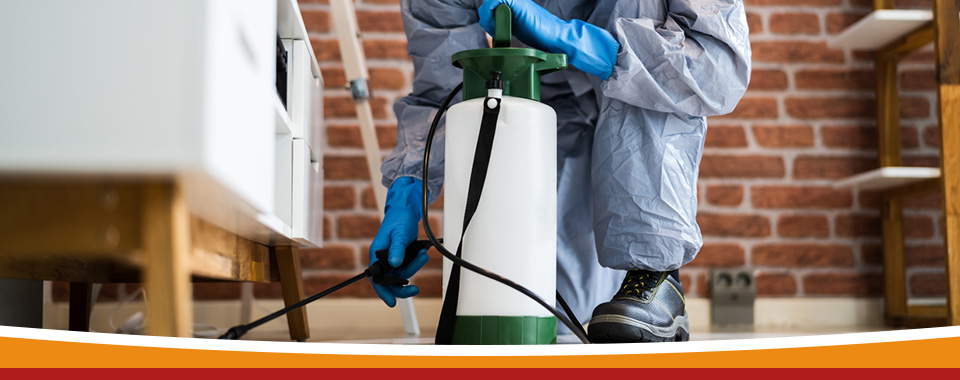Exterminator DC: Your Remedy for Pest-Free Staying In Washington DC!
Exterminator DC: Your Remedy for Pest-Free Staying In Washington DC!
Blog Article
Specialist Pest Control Techniques for Long-Term Results
In the world of bug control, achieving sustained efficiency and long-term outcomes calls for a precise method that goes beyond plain elimination. Specialist insect control strategies encapsulate a detailed method that begins with a complete evaluation and evaluation, adhered to by exact pest recognition to recognize their actions patterns. The application of Integrated Bug Management (IPM) concepts, combined with eco-conscious treatments, forms the keystone of lasting pest eradication. The true test exists in the ongoing monitoring and maintenance of the treated locations, ensuring a pest-free environment for the near future. By delving into the complexities of these techniques, a deeper understanding of specialist pest control approaches for enduring outcomes arises.
Evaluation and Analysis
Upon going into a property for insect control solutions, the initial step is a complete assessment and evaluation to recognize the degree of the problem and figure out one of the most effective therapy plan. Specialist bug control professionals are educated to thoroughly check out the facilities, searching for signs of bug activity such as droppings, chomp marks, nests, or any type of architectural damage. They will likewise analyze the problems that may be drawing in parasites, such as food resources, water leakages, or entrance factors.

Parasite Recognition and Behavior

Furthermore, recognizing the actions of the identified parasite is essential to applying reliable control steps. Knowing where insects nest, what they feed on, and their activity patterns can help pest control experts devise approaches to eliminate them efficiently.
Integrated Bug Monitoring (IPM)
Integrated Parasite Management (IPM) approaches integrate numerous techniques to manage and stop insect invasions in a sustainable and eco-friendly fashion. bed bug dog. By incorporating approaches such as organic control, environment manipulation, modification of cultural practices, and making use of immune varieties, IPM aims to lessen making use of chemical pesticides
One of the vital principles of IPM is the focus on avoidance. This proactive technique includes surveillance bug populations consistently to discover any kind of potential concerns before they rise. By recognizing parasite troubles at an early stage, pest control actions can useful reference be applied promptly and effectively.
Furthermore, IPM advertises the usage of non-toxic insect control techniques whenever feasible. This can include using natural predators of the bugs, introducing beneficial bugs, or making use of pheromones to disrupt breeding patterns. By decreasing reliance on chemical pesticides, IPM not just secures the atmosphere but also helps keep a balance in the ecosystem.
Environmentally-Friendly Therapies
Carrying out eco-conscious approaches in pest control treatments can successfully attend to problems while focusing on ecological sustainability. Environmentally-friendly treatments concentrate on decreasing the impact of pest control methods on communities, non-target microorganisms, and human health. These methods typically include making use of natural killers, such as ladybugs or nematodes, to manage pest populations, reducing the demand for chemical interventions. In addition, strategies like habitat adjustment, such as adjusting wetness levels or getting rid of food resources, can help hinder insects without the use of damaging substances.
One more secret element of environmentally-friendly treatments is using natural and biodegradable products that damage down rapidly without leaving harmful deposits in the environment. Herb pesticides acquired from plants like chrysanthemums or neem offer reliable insect control while posturing minimal risk to non-target varieties. In addition, utilizing techniques like warmth treatments or pheromone catches can target particular bugs with precision, minimizing the overall environmental effect of pest control practices.
Recurring Monitoring and Upkeep
Regular security and upkeep are necessary components of effective parasite control administration. Continuous monitoring plays a crucial function in guaranteeing that bug infestations are discovered very early and handled without delay. Routine evaluations by trained professionals are necessary to identify any type of signs of pest activity, analyze the effectiveness of previous therapies, and raccoon removal make modifications to the pest control strategy as required. By keeping track of parasite populaces over time, insect control professionals can track fads, prepare for possible concerns, and carry out preventive procedures to decrease the danger of future infestations.
Along view it with surveillance, maintenance practices are crucial for long-lasting insect control success. This includes implementing appropriate sanitation steps to eliminate potential food and water sources for parasites, sealing access indicate prevent parasites from entering the facilities, and addressing any kind of structural problems that might help with parasite infestations (bed bug dog). By integrating ongoing surveillance and maintenance into an incorporated bug administration approach, businesses can guarantee a pest-free environment and guard their residential or commercial property versus costly damages and wellness risks
Conclusion
Finally, making use of professional insect control techniques such as extensive inspection and analysis, precise insect identification and understanding of their actions, incorporated bug management methods, environmentally-friendly therapies, and ongoing surveillance and maintenance are necessary for achieving lasting cause insect control. By implementing these methods, people can efficiently take care of pest infestations and maintain a pest-free atmosphere in a lasting way.
Report this page